Undergraduate dissertations were published by the Library at this year’s Degree Show, giving visitors a new insight into the research behind the exhibits.
After being impressed by the standard of writing among this year’s Fine Art and Art & Philosophy students, Dr Helen Gorrill worked with Kirsty Knowles and Michael Duncan from Library Research Services to publish 56 dissertations, making them accessible via QR codes alongside the artworks.
The dissertations were published on the new University of Dundee ISSUU website and made freely available to the public. This was the first time the Library had supported digital publications of undergraduate dissertations for the Degree Show. The aim of this project was to boost the visibility of the student’s research, give them experience of being published, and provide another dimension to the exhibits for visitors to the Degree Show.
Publishing the dissertations raised important questions about copyright, QR codes, and managing creative practice publications.
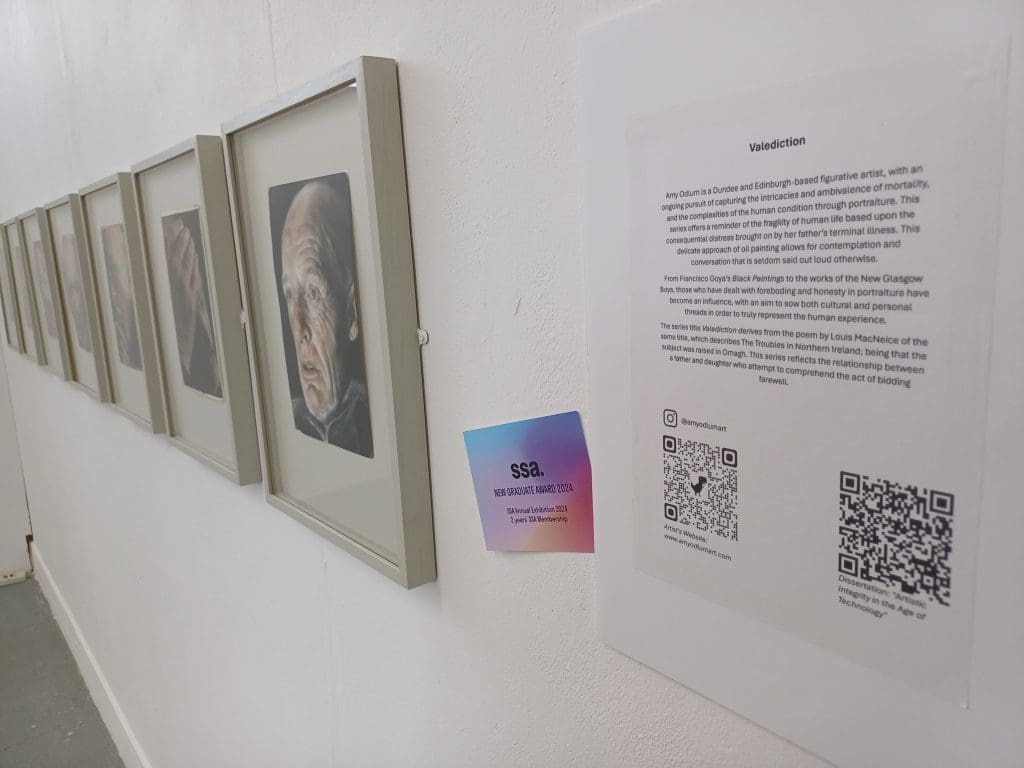
Copyright – the biggest hurdle
When the dissertations were written, they were not intended for publication and so many contained third-party copyrighted materials without the required permissions for online distribution. Our options were to:
- seek permission from the copyright holder for permission to use their images in a publication
- find an alternative version of the images with an open licence
- redact any images that may infringe on third-party copyright
The idea to publish the dissertations came after they were submitted and with only a few weeks before the Degree Show. The intention was to have the dissertations published online with QR codes printed and distributed to students for their exhibits ahead of the Degree Show, so time was very limited. In agreement with Helen and the students, third-party copyrighted images were redacted from the dissertations.
While it was unfortunate not to have the dissertations published in their entirety, we felt this was the best way to avoid any copyright-related issues resulting in the take-down of the dissertations altogether. Any images of work not created by the students themselves were redacted from the files.
We applied a Creative Commons (CC BY-NC-ND) licence to the dissertations so that they were openly available to the public. This also protected the students’ work from being re-used commercially or changed in ways they may not have wanted.
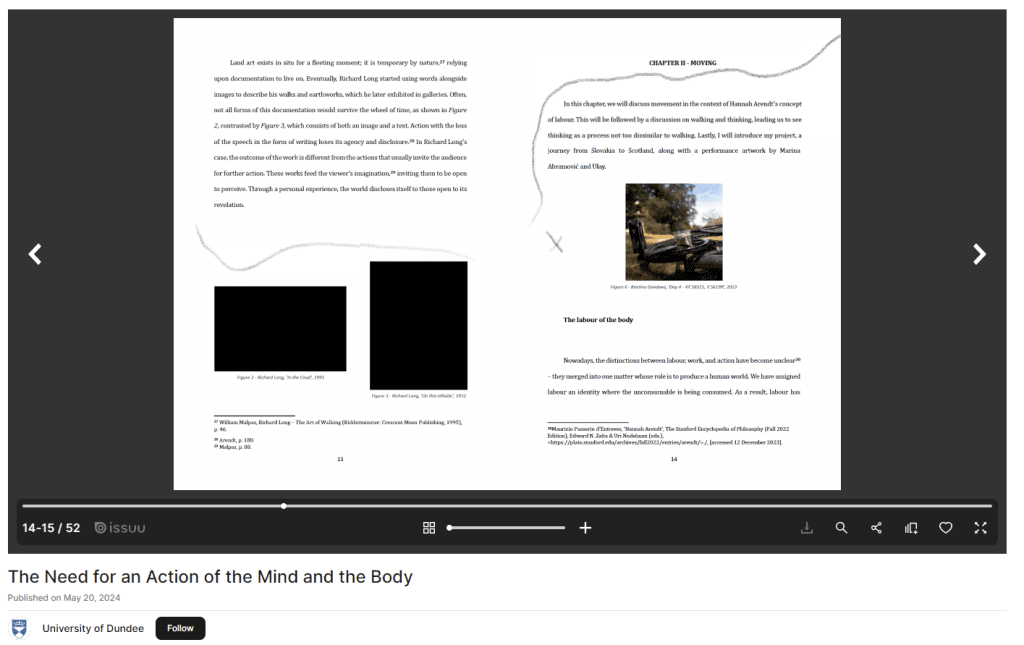
The tools – ISSUU, DOIs, QR codes
The dissertations were published on ISSUU, which turns static PDFs and other file types into digital flipbooks that replicate the look and feel of paper publications. It provides interactive features with the ability to easily share and promote content across various channels. We published all the dissertations in a “stack” so they appeared as one entire collection.
We then assigned a DOI – a permanent identifier – to the collection and created a record for it on the Discovery Research Portal. This meant the University would have a permanent record of the collection and there would a persistent link providing access to it.
Once the files were uploaded QR codes could be generated within ISSUU and sent to the students to incorporate into their exhibits.
The QR codes provided an instant connection between the visitors attending the Degree Show and the students’ research, enabling them to delve deeper into the artworks whilst giving the student’s research more exposure.
A QR code to the entire dissertations stack even appeared in the Contemporary Art Practice Society’s catalogue!
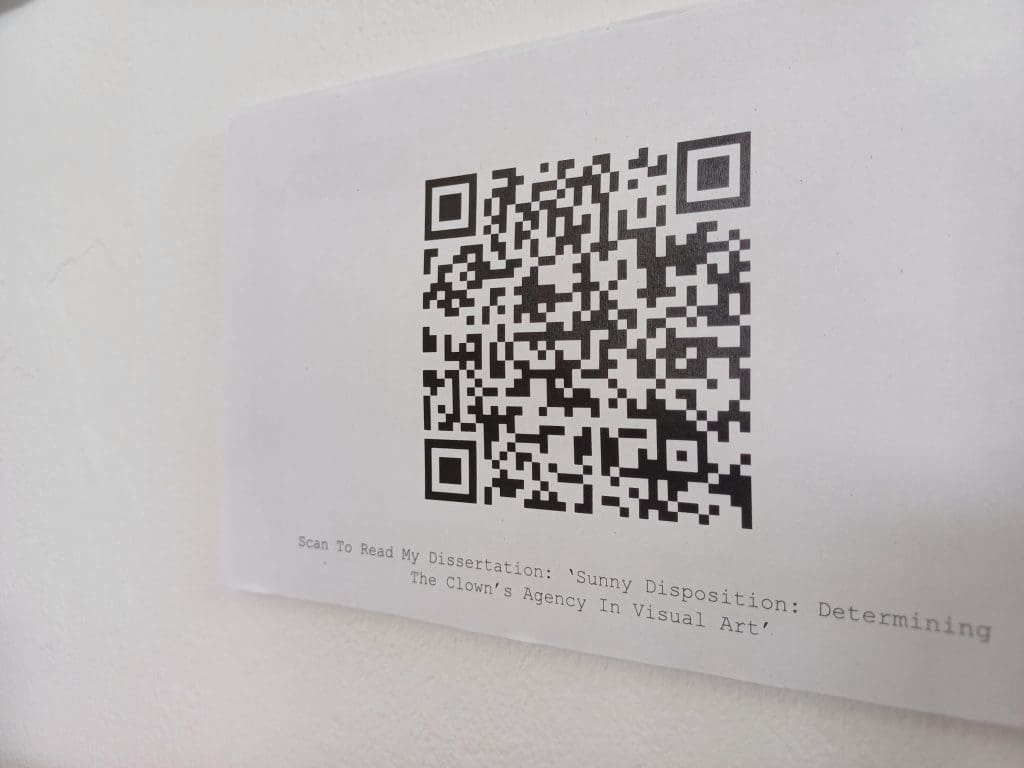
The engagement statistics speak for themselves!
ISSUU provides detailed performance metrics at individual item level as well as for all publications. By the end of the Degree Show the dissertation collection received over 32,000 impressions with over 1700 reads. These were remarkable figures for our first foray into dissertation publication. It not only showed what a profile event the Degree Show is, but also that the processes we developed and tools we used worked well to encourage this positive engagement with the students’ work.
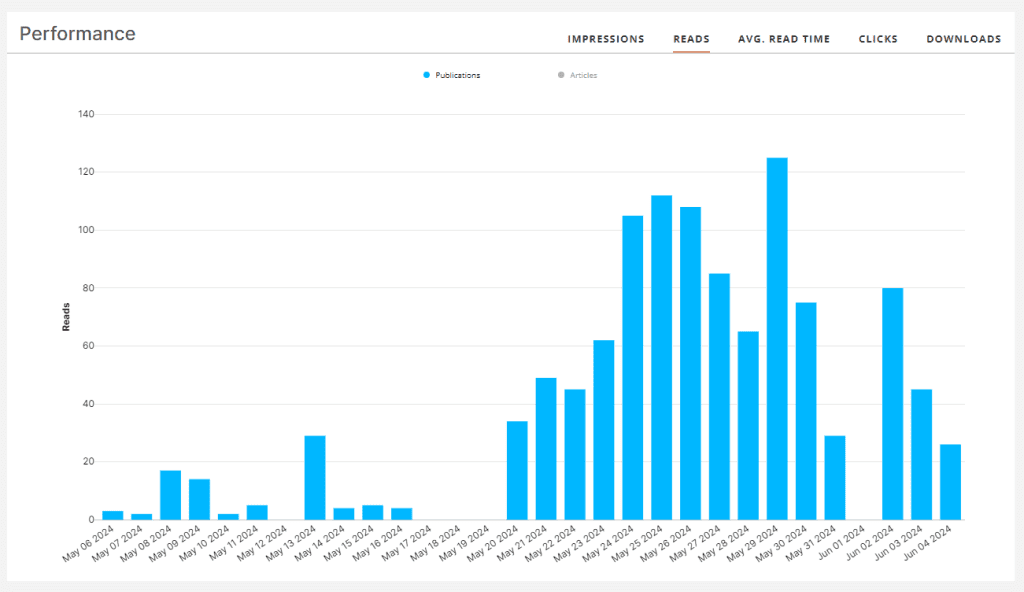

What have we learned?
A tight timescale meant a lot more redacting of the dissertations’ content than we would have liked. During the redaction process we began to discuss ways to avoid having to remove these worthwhile images in the future. What copyright awareness would students and supervisors benefit from? When is the best time to inform students about the ins and outs of copyright law?
In future, we hope to raise awareness of copyright issues and provide Library resources for students and supervisors that allow them to produce work for publication.
When visiting the Degree Show we wondered if this publishing model would work with other disciplines in DJCAD. The dissertations from Fine Art students pose specific challenges, particularly around third-party copyright, but there are other potential issues when it comes to publishing art work that students have produced themselves. Would they be prepared to share it with a wider audience at this stage in their artistic/ academic careers? Would they want it to be freely available in perpetuity? Our principles around Open Access to research may come up against the need to protect the student’s Intellectual Property.
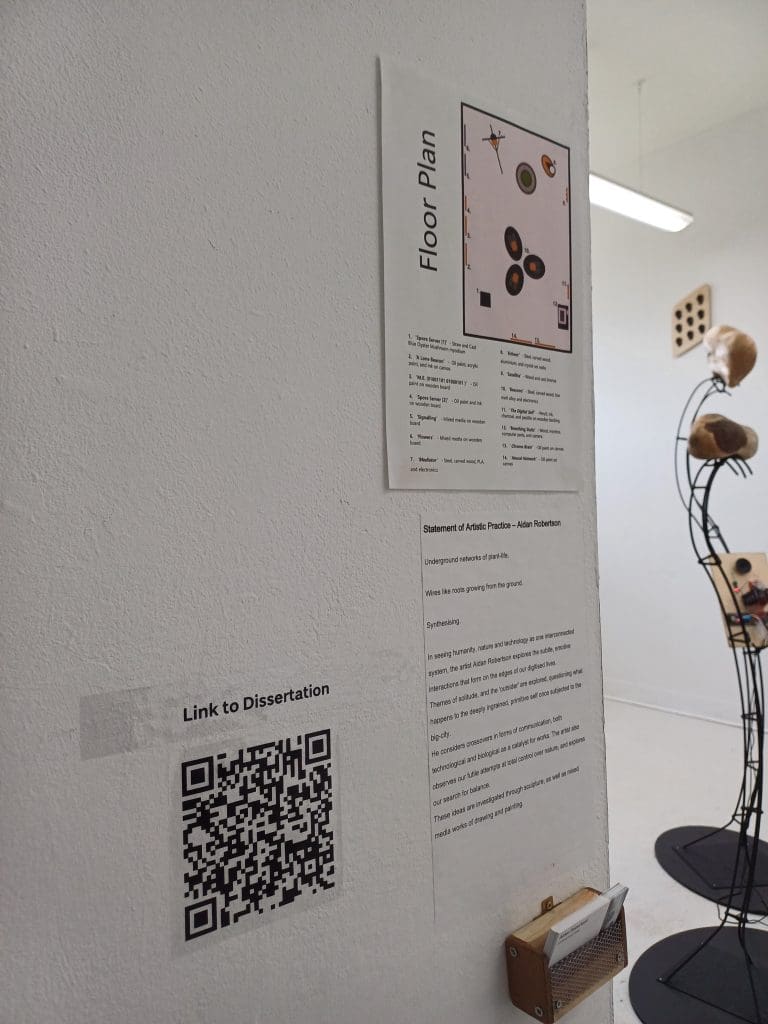
Students from other disciplines in DJCAD printed physical material to accompany their Degree Show exhibitions. The potential for these to be published openly and digitally on ISSUU was clear to us. However, this raised a question of whether students would have to choose between using the best images for making their academic argument or using a less suitable one that had cleared copyright permissions for full publication.
Last minute edits and distributing QR codes definitely made us feel part of the run up to the show frenzy, but it was worth it! Exploring the Degree Show during the preview night we could see the QR codes were well used by the students and visitors.
Thanks for letting us be part of the #DJCADDegreeShow!
To view the Fine Art and Art & Philosophy dissertations from this year’s Show, visit our ISSUU website.
Interested in publishing your project/work with us? Using the platform, ISSUU, is just one of the options available. Want to know more about the publishing services we provide? Get in touch with the Library’s Research Services team! Contact us via email at: discovery@dundee.ac.uk
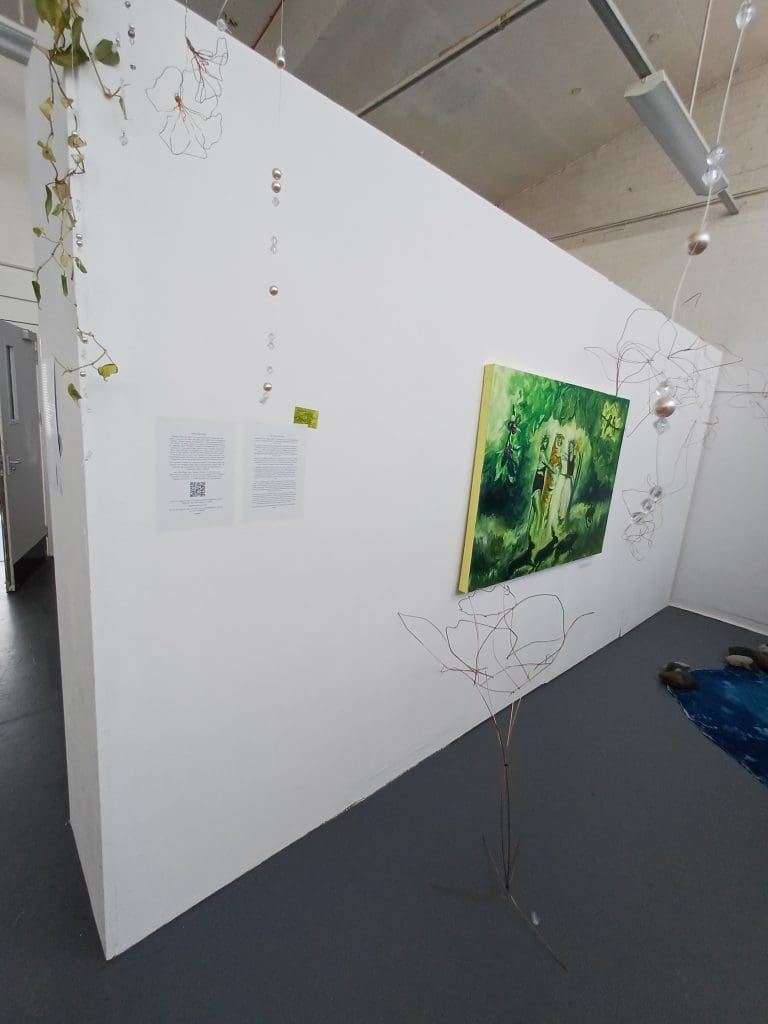

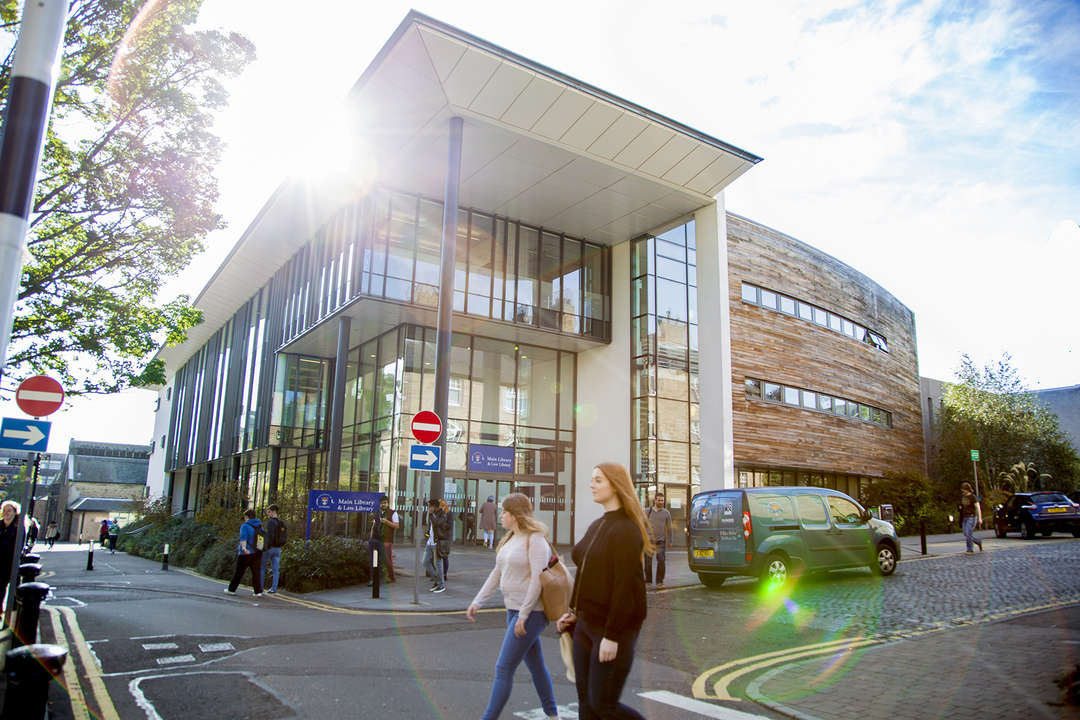
Leave a Reply